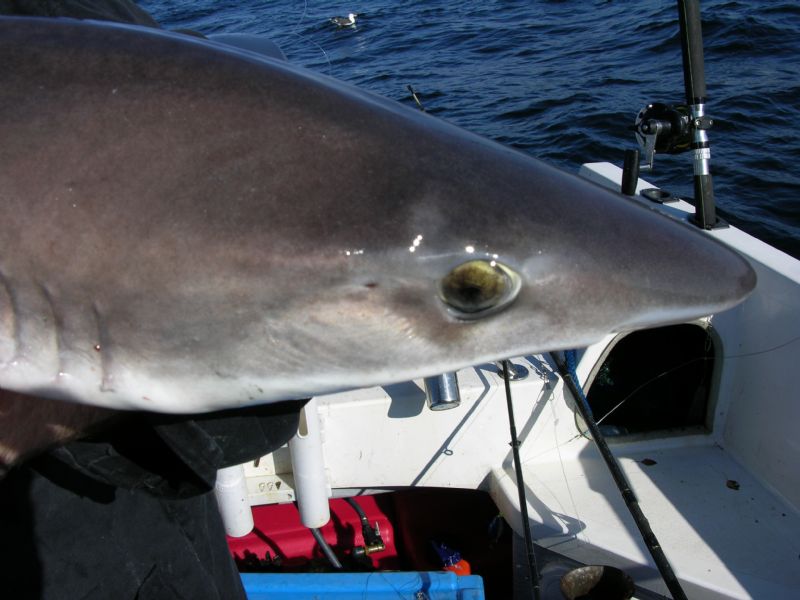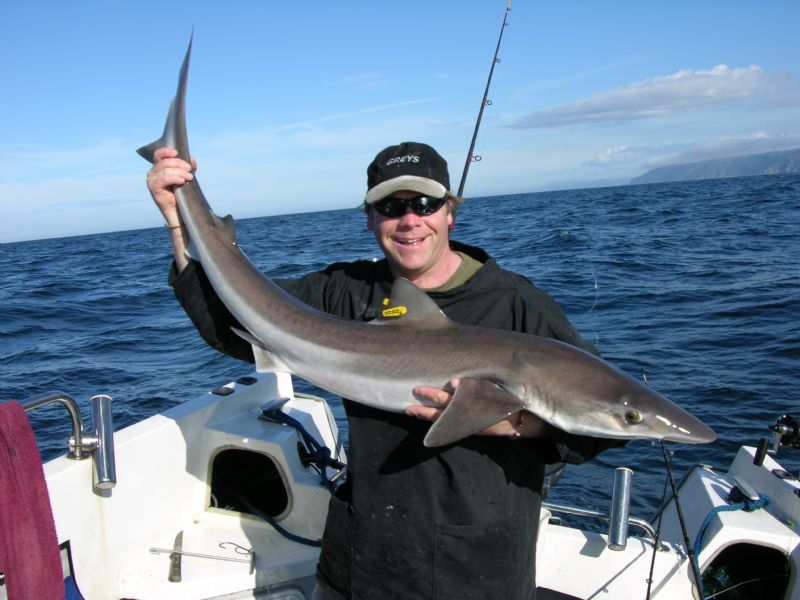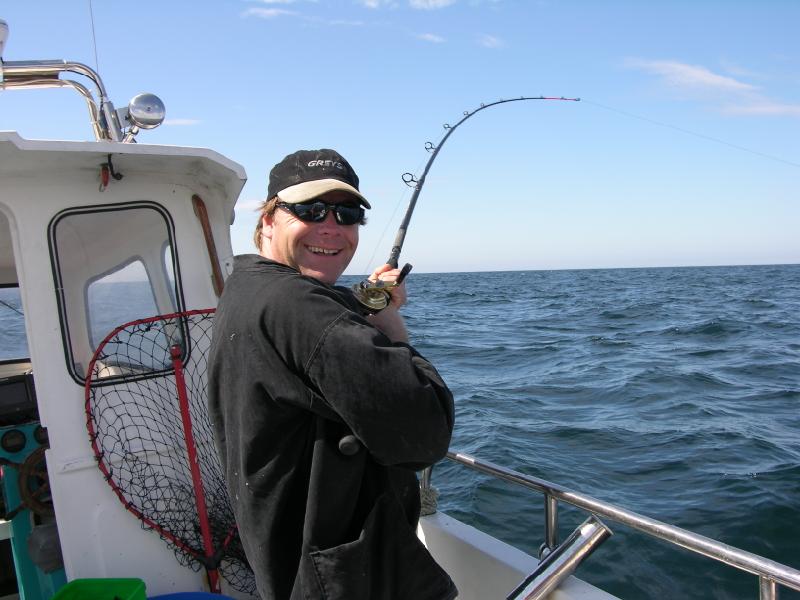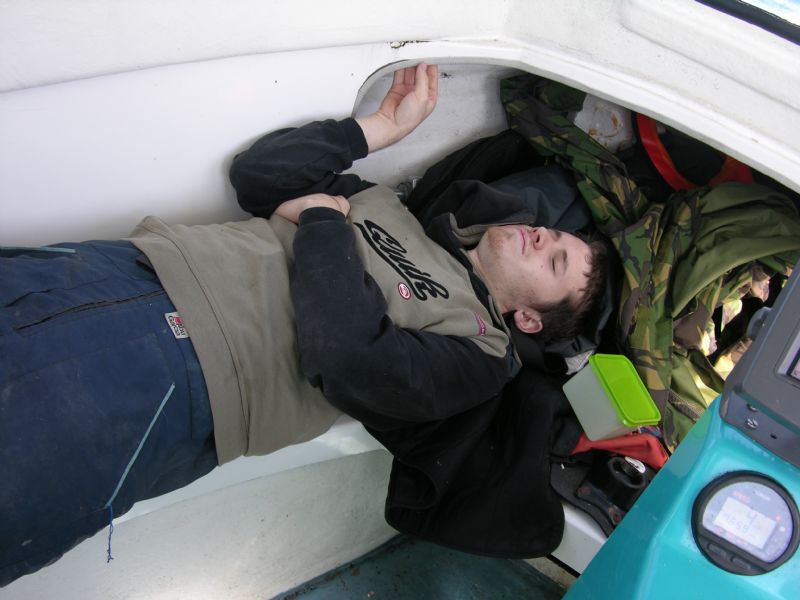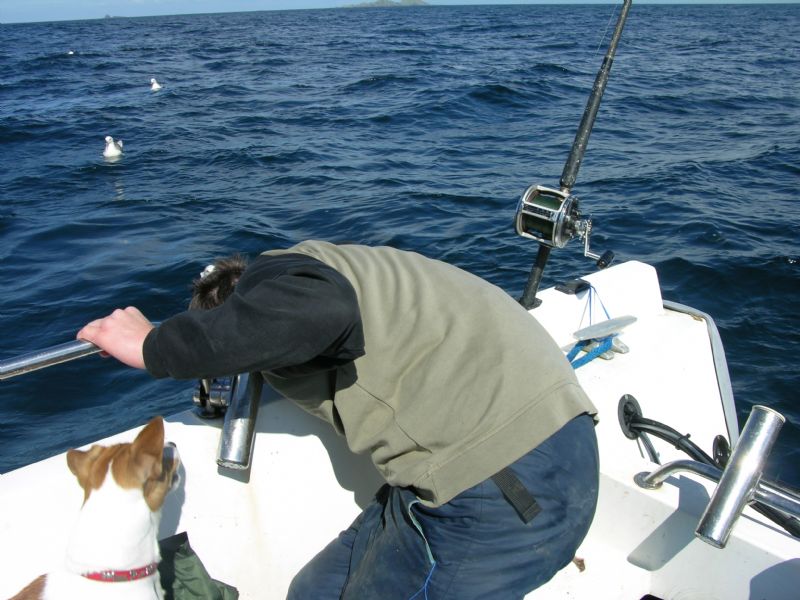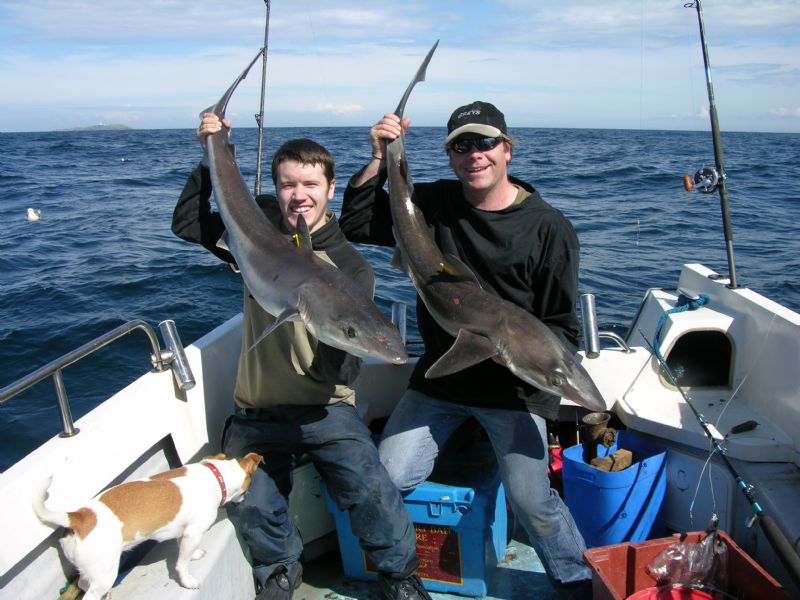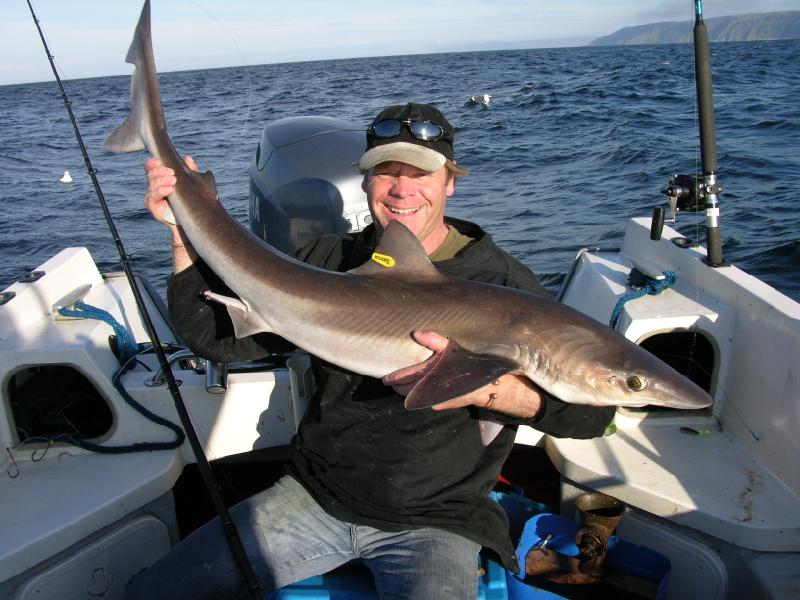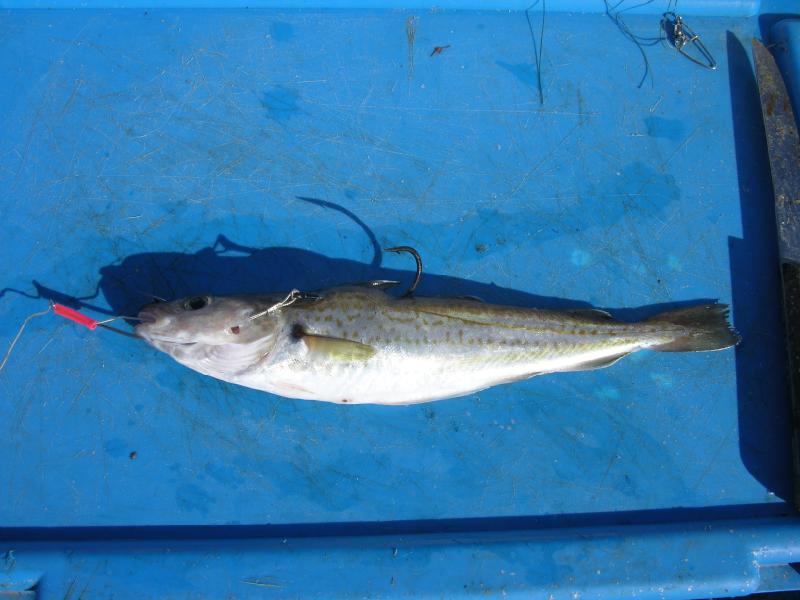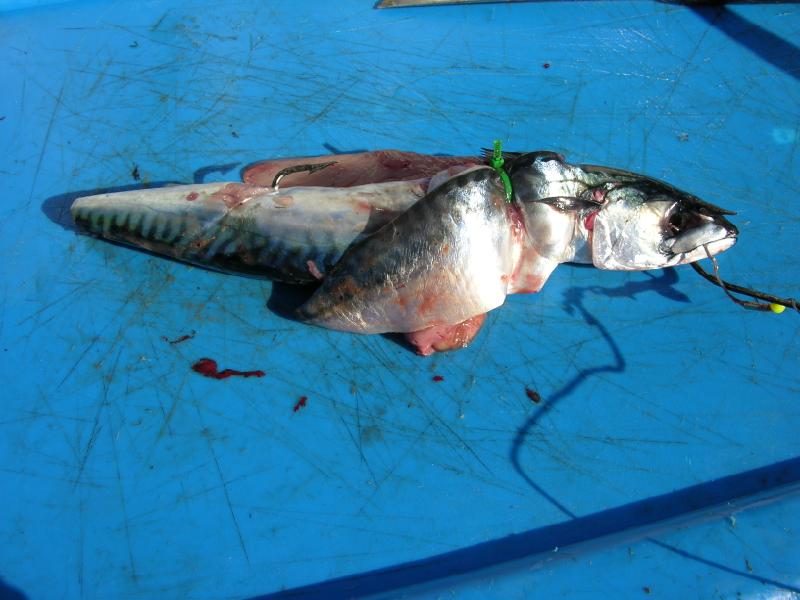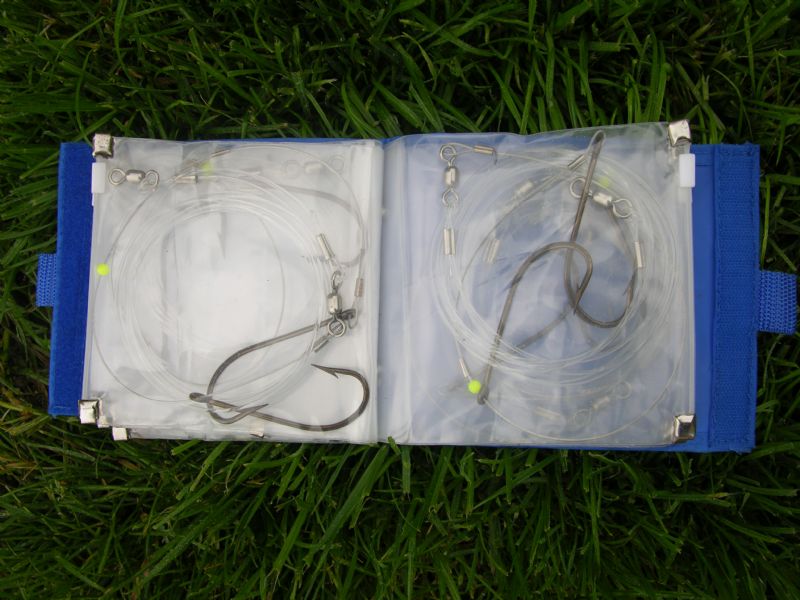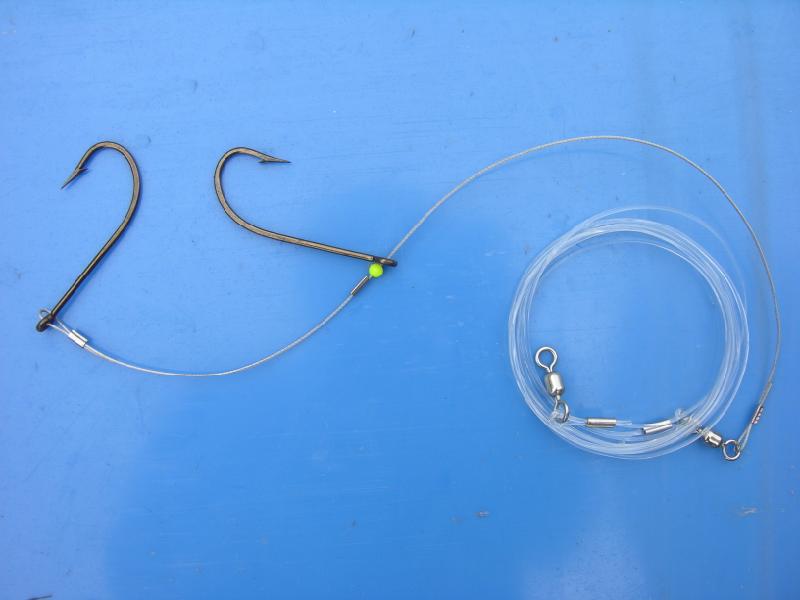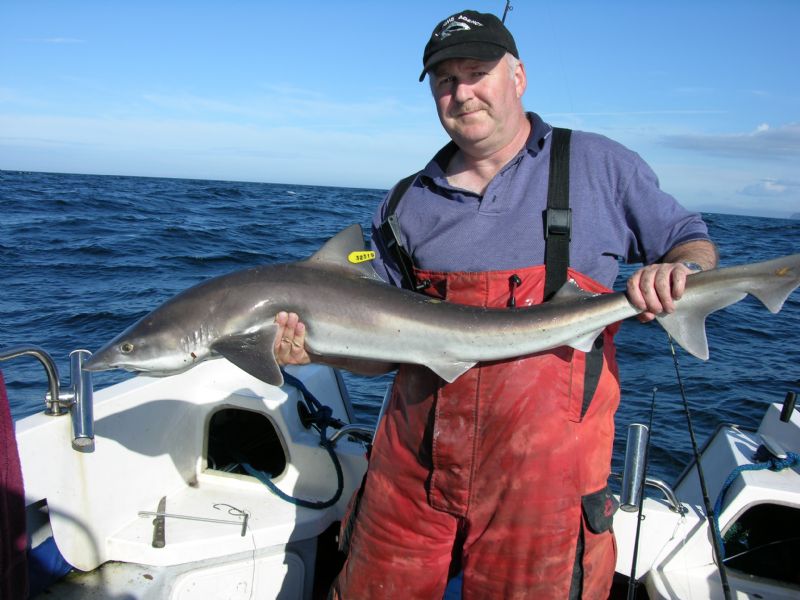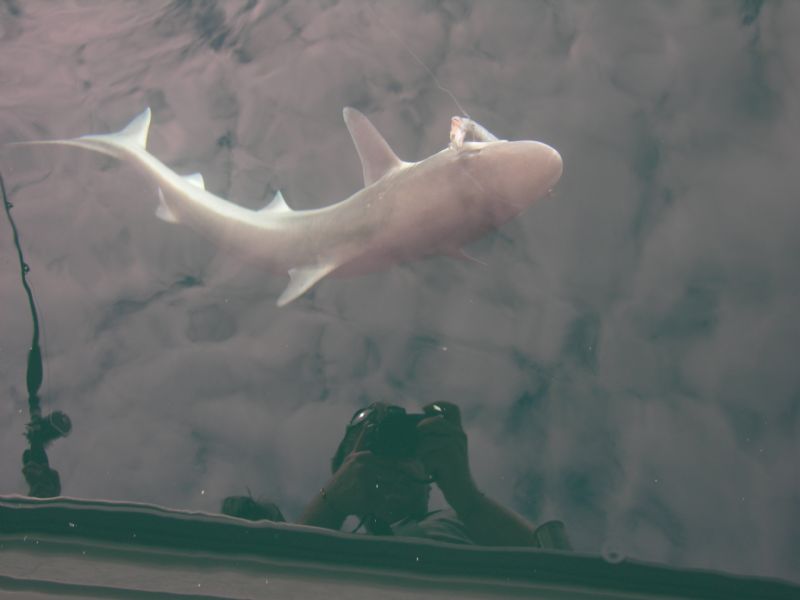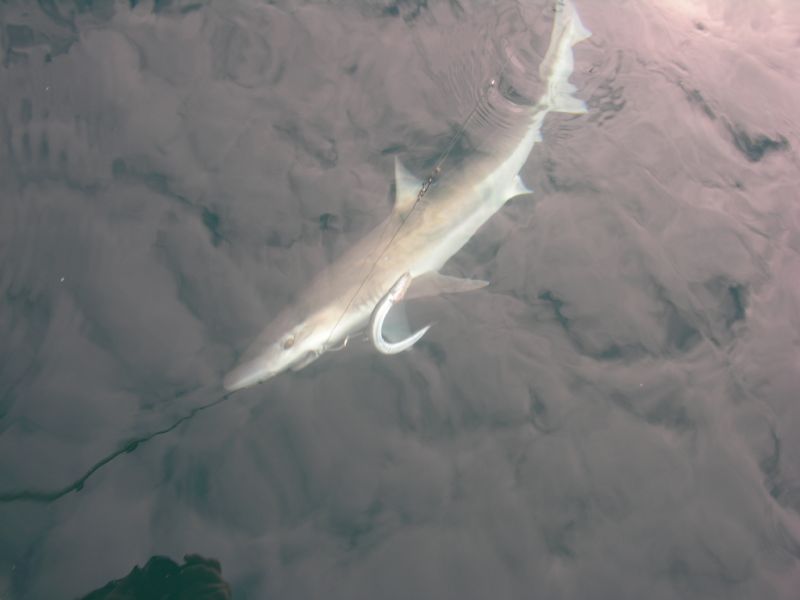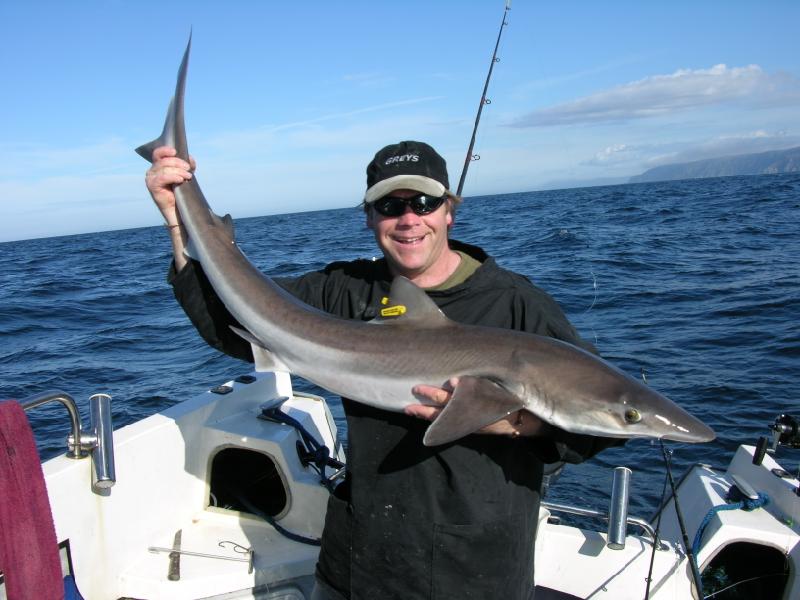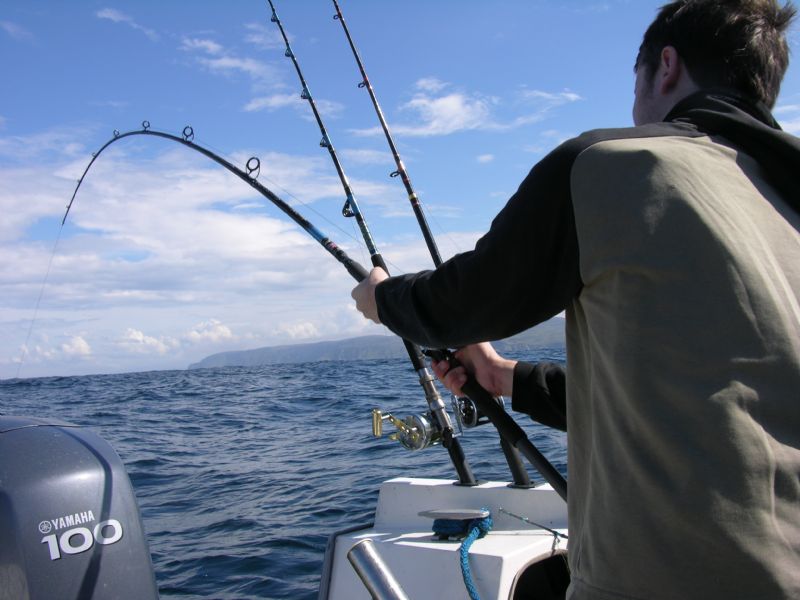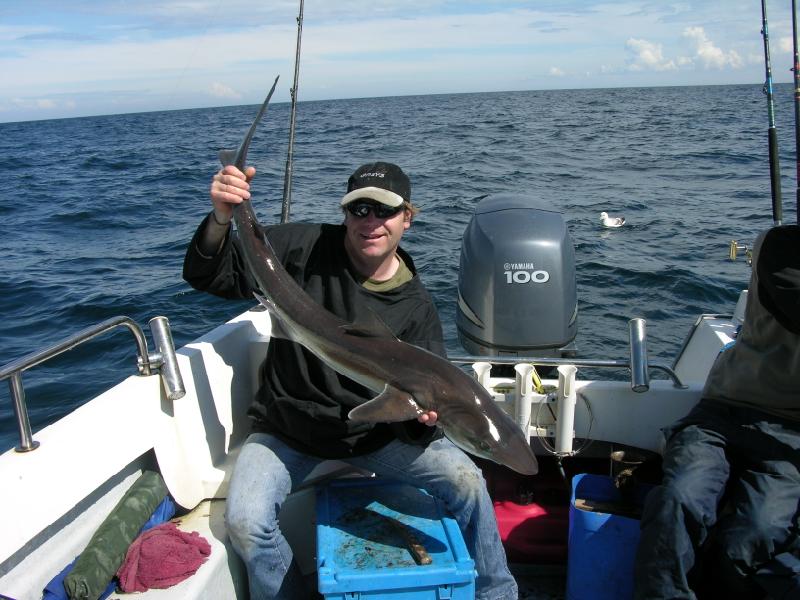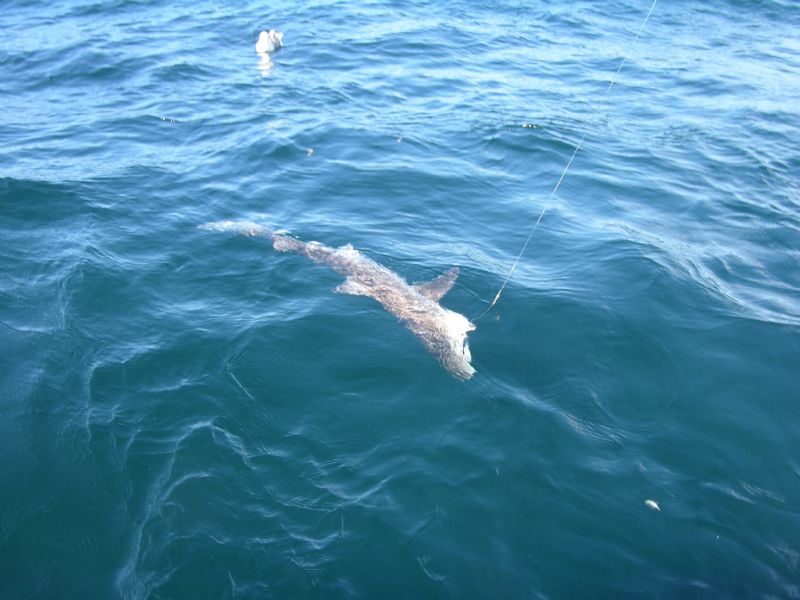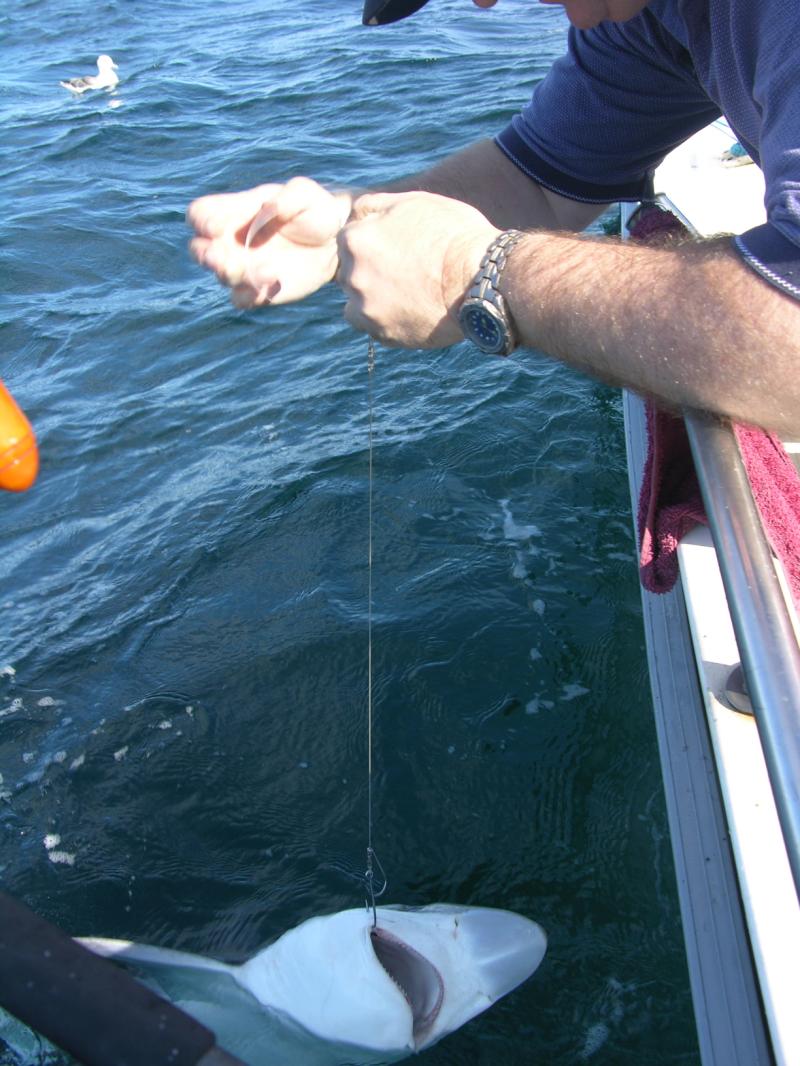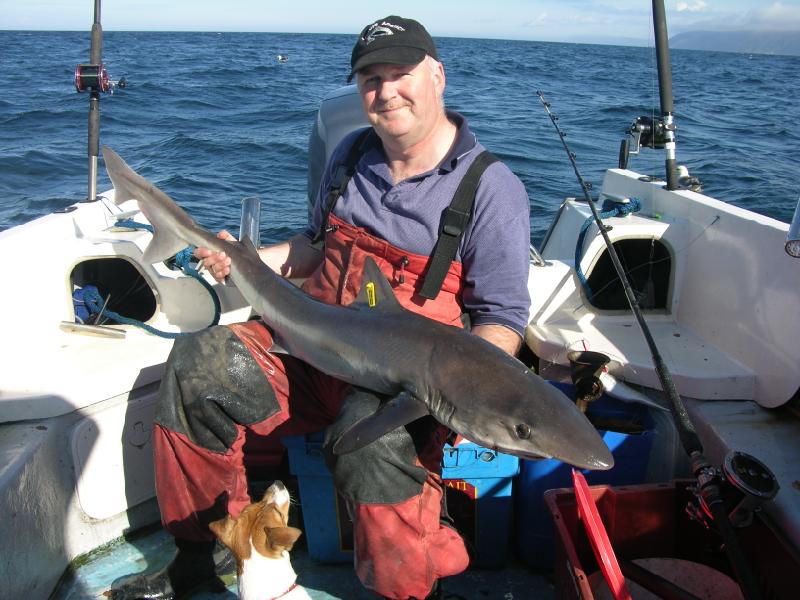Specimen Hunting Series Part 10 Tope
The Tope Challenge
Latin name (Galeorhinus galeus)
Irish record, 66 pounds 8 ounces, taken at Carlingford Lough on 15.7.1979 by Cyril Young
Specimen weight, 18.144 kilos or 40 pounds
The trip
Looking back through the recent list of species I have targeted for this series throughout the season, I realised that it was time to seek out something a little more exciting. Mullet, Tench and Wrasse are worthy challenges but it was now time to catch a true predator, something a lot larger, and equipped with a healthy set of “gnashers”!
With this in mind, I set my sights on a specimen Tope. I have said in previous articles that this is my favourite salt-water species, and I certainly haven’t changed my mind. Tope, similar to most sharks, are perfect hunter-killer machines. The sleek, streamlined body shape and powerful tail are designed to cut through the water giving tremendous acceleration when required. Something that is all too apparent when an angler is fortunate enough to hook one! Camouflage used for protection or ambush is superb. The bronze, grey or sandy coloured back and flanks merge into a creamy white under-side that makes it difficult to see from above or below. Mother Nature has taken millions of years to develop and perfect these awesome, underwater hunters, and in doing so, she has excelled herself.
Small, but immaculate first fish
It is unfortunate for me that I cannot devote enough time to Tope fishing. Work, family commitments and weather conditions allow only a small window of opportunity throughout the year. When a trip comes together however, I find myself almost racing to the venue. A phone call to Dave Craig secured a mate for the day. A chance call from Andrew Wolsey, son of well- known Belfast tackle dealer Dennis, gave us another angling companion looking for a day on the water. As this was his first Tope trip, I was hoping he would bring us some beginners luck!
It was an early start as usual, as the one hundred and thirty mile drive to Donegal with boat in tow, takes up to three hours. It turned out that all three of us had suffered a poor night’s sleep; such is the excitement of a potentially good Tope trip! On arrival at the harbour, the sea had a heavy “chop” due to an easterly breeze, but still well within the safety limits and comfort of my Fast-Fisher.
Fantastic feeling as a Tope "rips" line off the reel
Once launched, priority was on finding bait, namely Mackerel, but Whiting can be just as good. Typically they were thin on the ground and with only a handful of hook baits we headed out to the Tope mark. With the rods set-up and in position, a quick drop with a Mackerel rig luckily found a large shoal below the boat and we soon had more than enough hook baits for the day ahead.
If only the Tope were as obliging! By four o’clock in the afternoon, we had plenty of Whiting, Coalfish, Mackerel and even stunning Red Gurnard just under specimen size, but not a single Tope run.
Although there were no small craft warnings on the V.H.F, the sea state had worsened and Andrew spent more time hanging over the gunnels than fishing. A decision had to be made and so we headed for a new mark over deeper water. With baits refreshed, all we could do was hope that we drifted into a few fish, while Andrew retired to the cabin looking a bit green around the gills.
Andy wont thank me for showing these photos!
Just as I began to fear the worse, a ratchet gave that adrenaline-rushing scream that only an angler can appreciate and I lifted into an angry Tope as it ripped line off the reel. This is what I live for as a sea angler. Personally, I am not in it for the table fish, just the mad “buzz” you get when line tears off the reel with no apparent intention of stopping. At this moment, I am in paradise. As the fish eventually tired under constant pressure against the clutch, I pumped it to the surface and safely landed it for photographs, measurements and a nice yellow tag in the dorsal fin. By no means a large fish, certainly nowhere near to the specimen size but I cared not a jot, it was a Tope and I was chuffed to bits.
Using the chart plotter, we took a second run over the same mark, only this time it proved even better. There were four rods out for maximum success, however, all four rods screamed at once! Not an ideal situation, and certainly not expected. There was nothing for it but to drag Andrew out of the cabin and stick a rod in his hand. I don’t know how he managed it, but he played a cracking fish to the surface and kept it safe alongside the boat, while Dave and I handled the other three. With two Tope brought to the side of the boat, and quickly tagged and released, the other two could now be dealt with. Andrew’s fish came in at thirty- eight pounds, just two pounds shy of specimen size, but a fabulous first Tope for him. He managed a quick photo shoot before hanging over the gunnels for the umpteenth time and retiring to the cabin, God love him!
Part of a "quadruple hook-up"!
Obviously it was decided to use fewer rods on the next drift for fear of a repeat performance, as we were one man down, which proved a wise decision. Each drift gave Dave and I continued sport, and as I lifted into Tope number fifteen, I realised that this was a lot meatier than any previous fish. A fabulous battle ensued, which ended up as stalemate in mid-water. I wouldn’t let it go down but the stubborn fish refused to come up! Luckily he tired first, and an obviously larger shape loomed out of the depths towards the boat.
Weighing in at forty- two pounds, he was the guy we were looking for, and not before time. With a change in tide and the wind swinging to North-east, we were pushed off the pack, and only managed another two before quitting for the day. To be honest, it was a relief to have the final whistle blown; wrestling with seventeen Tope in four hours is hard work! Don’t get me wrong, I am not complaining, but as I write this article, I am aching from head to foot, and still have the red marks up my forearms from Tope-skin abrasion “burns”. I know, poor old me.
A good "fat" fish, pushed the weight over forty pounds
Bait
Mackerel has to be the number one choice in all its forms, whether whole, cut as a flapper, or simple fillets. However, it is important not to over look other prime baits such as Whiting and Launce. A lot will obviously depend on the natural food source present in any particular area.
I recall a very memorable Tope trip aboard Robert Nevin’s charter boat some years ago, operating out of Lough Swilly. It had been a slow day at anchor, and some of us decided to try for bait. Unusually, we began catching small Scad, which were substituted for the fresh Mackerel and promptly dropped back over the side on a Tope rig. The Scad were “hit” almost immediately. Tope, it proved, were present, but refusing the Mackerel baits, obviously pre-occupied with the shoal of live Scad attracted to the “chum” scent trail. On one occasion, as one of us retrieved a Scad, a Tope followed the fish, hitting it on the surface. What I wouldn’t have done at that time for a fly rod and some large Pike flies!
A mackerel "double-flapper" and whole Whiting, both excellent Tope baits
Tackle
Balanced tackle is the order of the day. Too many times, Tope are taken on heavy gear that dulls any fun of the fight. However, under- powered tackle such as Carp or Pike rods are on the light side and will lead to a lengthy battle that may put the fish under un-necessary stress! If conditions allow, a light boat rod in the 20lb class is ideal, coupled with a suitable reel such as an Abu 7500 or Penn 3/0. Thirty pound breaking strain braid is sufficient although I prefer fifty to avoid tackle losses over patchy ground. In shallow water and at anchor, up-tiding can be advantageous, casting away from potential “boat noise”.
Starting with hooks, size 8/0 are ideal, but should be bronze versions or ones that will eventually rust. Despite the best of intentions, there are times when a Tope will take a hook deep. In this case, simply cut the wire as close as possible to the hook. Body chemicals and the corrosive nature of salt water will destroy the hook with no lasting damage to the fish. Prolonged poking around in the delicate throat area will cause more harm than good.
I normally use a wire biting trace of approximately twenty inches for the hook length to guarantee a fish reaches the boat. It is essential to incorporate at least six feet of 150lb-200lb “rubbing” trace above the hook. Tope have a tendency to get wrapped up in the line and braid will not last a second against rough skin or sharp teeth. Add a tubi-boom, or similar to avoid tangles as the rig drops through the depths. Keep a quality T-bar on hand, and pliers should the hook length or hook need cut. Smaller Tope can be landed in a large landing net, but it is just as handy to hold the tail, support the belly of the fish, and lift into the boat. If photographs, weighing or tagging were not required, the best scenario would be to un-hook the fish at the side of the boat quickly and safely with an extended T-Bar.
Dave Craig, with one of many caught, tagged and quickly released.
Tactics
Although some venues respond well to drift fishing, the majority of Tope angling is under- taken at anchor. Once a known or suspected “hot spot” has been identified, the anchor is thrown and the boat settles into position. If the water is reasonably shallow, up to sixty feet or so, a “chum” bag of mashed fish and bran can be hung over the side to give a great scent trail. Any deeper than this and I prefer to attach the chum bag to the anchor chain. With these methods, Tope will soon locate and follow the scent trail up-tide to its source, hopefully lifting any baited hooks on the way.
In shallow water, the method of up-tiding can be used to great effect. This involves casting a bait with grip lead attached, up-tide and away from the boat, allowing a belly to form in the line. The belief is that the bait is now far enough away from any disturbance caused by the boat and anglers in such shallow water.
However, I usually prefer to up-tide for a different reason. Sometimes at anchor, you will find a strong breeze will push the boat off course from the scent trail, pulling baits away from the productive area. An up tide set-up will allow you to cast into the existing scent trail giving better odds for a hook-up.
Another tactic on some venues is drift fishing. Rather than drawing fish to the boat, the idea is to drift in the hope of running into a pack of feeding Tope, and can be effective due to the large area covered. If fish are discovered, mark this on the plotter and try a second drift over the same ground, or perhaps drop the anchor.
Interesting facts (taken from www.marinebio.org)
Tope are considered a highly migratory species and are widely distributed throughout the planet. They are found in the Western Atlantic from Southern Brazil to Argentina, the Eastern Atlantic from Iceland to South Africa, the Mediterranean, Western Indian Ocean, the South-West Pacific in Australia and New Zealand, Central Pacific in Hawaii, the Eastern Pacific from British Columbia to Southern Baja, California and the Gulf of California in Mexico.
They live up to fifty- five years of age reaching lengths of 1.93 metres, and can attain weights of forty- five kilos. Tope have a long, pointed snout, large mouth, and small, sharp, blade-like teeth. The second dorsal fin is similar in size to the anal fin. Tope are commonly found near the continental shelf, but also around coastal waters up to 550 metres deep!
Unlike Dogfish, fertilized eggs develop inside the female without a yolk-sac placenta. Litter size ranges from 6-52 and increases with the size of the mother. Tope give birth once yearly with a gestation period of one year. New-born pups are 30-36 cm in length. One particular male Tope recorded was tagged in Ireland and successfully evaded trawlers and long liners for nineteen years before being captured and released on rod and line in Scotland!
It is a sad fact that Tope are listed as vulnerable and appear on the IUCN red list of threatened species. This means it is considered to be facing a high risk of extinction in the wild. On a positive side, at least this means their fragility has been noted and stocks are being monitored.
A recent application in Lowestoft to target all British and Irish sharks, particularly Tope, on a large, commercial scale was successfully halted by the intervention of anglers and conservationists. It was predicted that if this had of gone ahead, Tope in the UK and Ireland would have been wiped out within three years! It is important, as anglers and watchdogs, to fight for, and protect our environment.




